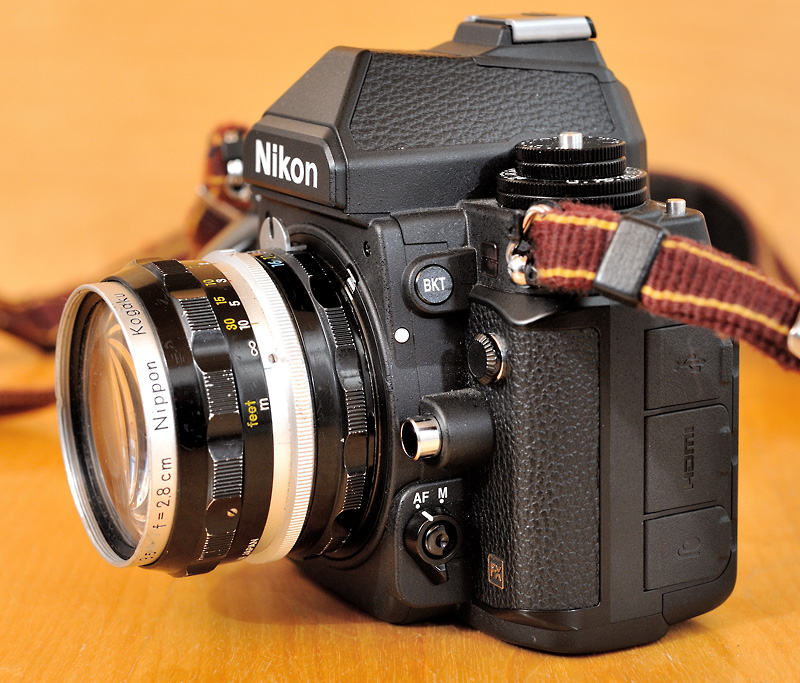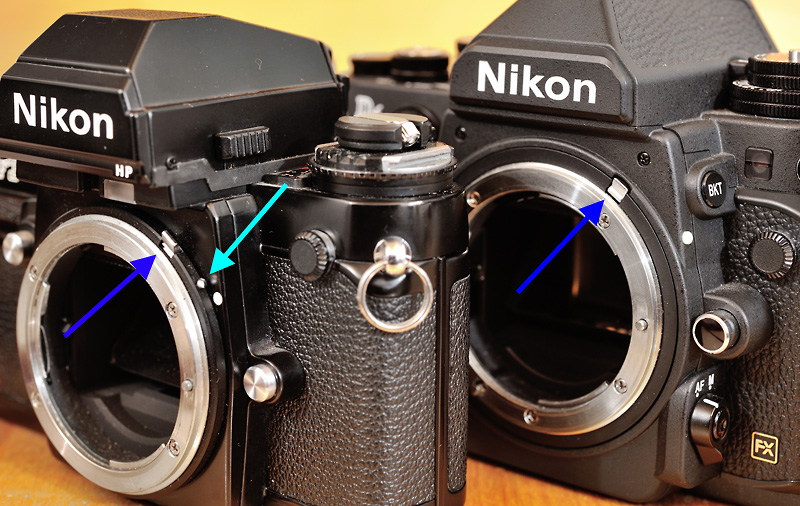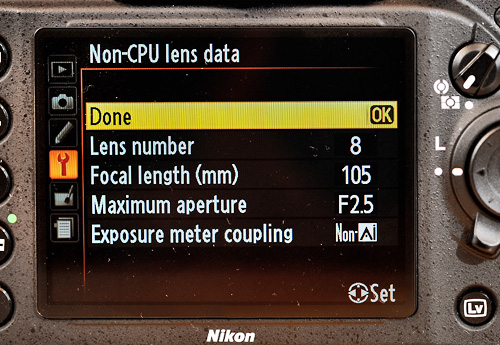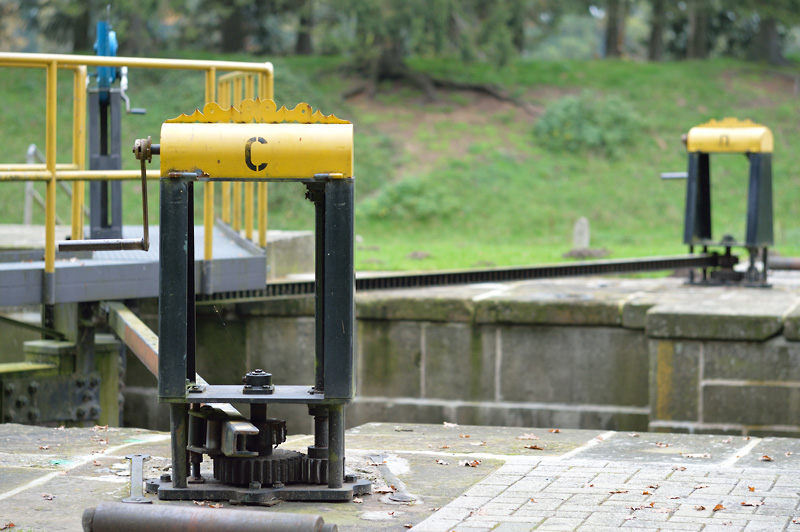

|
|
Nikon Df plus Nikkor 2.8cm f/3.5. |
Nikon's more expensive DSLRs (e.g. D3, D4, D600, D700, D800) offer both, a CPU interface and an AI coupling. Therefore older MF lenses with an AI coupling ridge can be used with exposure-metering. If you key in the lens data, especially the speed (smallest aperture number), you can also use matrix metering. The aperture must be set with the lens' aperture ring. Possible exposure modes are A and M. More details can be found in my article Understanding the F-Mount: using older lenses on your Nikon DSLR.
The Df offers a bit more: non-AI lenses are also usable. That is a unique feature amongst Nikon's DLSRs. But there are also some older SLRs with that feature, especially cameras which were introduced shortly after the AI introduction in 1977 and professional models. The list is not that long: Nikkormat FT3, Nikon EL2, FM, FE, F2A, F2AS, F3 series and F4 series. The F5 and F6 cameras can be modified by the Nikon service.
Mechanically, a non-AI lens will probably damage the AI coupling of the camera when you try to mount it. Therefore, the AI coupling of the above-mentioned cameras can be folded up. Don't forget: you must do it, before you mount a non-AI lens!

|
|
Nikon F3 and Nikon Df with folded-up AI coupling (blue arrows). On the older cameras you have to press a little button (cyan arrow) in order to release the coupling. The Df has a slight resistance that keeps you from folding it up accidentally. |
That's true for each camera: a few lenses are incompatible. Have a look in your cameras manual before you try to mount a lens for the first time.
But: my downloaded Df manual in German says the Nikkor 2.8cm f/3.5 (see image above) is incompatible with the Df. The printed German manual that came with my Df does not forbid the lens. And my downloaded English manual also contains no restrictions for the 2.8cm. I tried it and had no problems. If you are not sure about a particular lens, just ask the Nikon service. Even if a lens is not on the forbidden list: be careful and never use sheer force to mount a lens!
If you don't need exposure metering you just have to set the F-number with the lens' aperture ring and the shutter speed with the dial on the camera. Then shoot!

|
|
In the non-CPU lens data settings of the Df you must also specify the type of exposure meter coupling (AI or non-AI). |
The traditional way to meter with a non-AI lens on an AI camera is stop-down metering: you have to press the DOF preview button before you meter. All the old cameras with a foldable AI coupling work in that way.
The Df does not allow stop-down-metering - pressing the DOF preview button also activates the AE-lock. That's a typical behaviour of modern DSLRs.
Just like for AI lenses you have to key in the lens data of your non-AI lens. For AI lenses the Df has the AI coupling and for non-AI lenses the non-Ai coupling! You don't believe it? In the case of non-AI lenses the coupling is you! You must set the command dial for the aperture value to the same value you selected on the lens' aperture ring. That's clever and easy. But it is also a bit confusing - I tend to forget 50% of the settings;) But thanks to this trick you can use matrix-metering in A or M mode even with non-AI lenses!
In contrast to AI lenses it is not possible to meter with a non-AI lens without lens data. A mode where the camera shows the number of stops the lens aperture is closed does not exist for non-AI lenses.
Older non-automatic lenses (e.g. PC-Nikkor shift lenses) and accessories are also often incompatible to an AI coupling. But a lot of that gear is usable in conjunction with the Df. In that case you should use center-weighted or spot metering with the stopped-down lens. If you want to use lens data, you should mark the lens as AI (but nevertheless fold up the AI coupling). Otherwise you might accidently distort the metering by touching the aperture command dial.
Is the foldable AI coupling of the Df a breakthrough feature?
No, it is just nice to have! If there was an optical jewel in my collection, I would have modified it to AI years ago! In other words: the feature comes too late.
But it is fun! I took three lenses from the farest corners of my cupboard back into daylight: The above-mentioned 2.8cm f/3.5, the 105mm f/2.5 and the Zoom-Nikkor 43-86mm f/3.5.

|
|
Back to work! Nikkor 105mm f/2.5 and Zoom-Nikkor 43-86mm f/3.5. |

|
|
The 50-year-old 2.8cm lens is a solid performer. Stopped down to F8 it is sharp all over, but not very contrasty. |

|
|
The beautifully crafted 43-86mm was introduced in 1963. Optically it is a poor lens. It shows hefty distortions at both ends of the zoom range (on the left at 43mm, on the right at 86mm). Stopped down
it is reasonably sharp in the middle of the frame, but the borders are soft at every aperture. |

|
|
The 105mm f/2.5 is one of Nikon's legends. The optical design was developed in 1954 for Nikon's rangefinder cameras. It is a very sharp lens at every aperture. The image above was shot at F4. |
Should we go on ebay now for purchasing a couple of cheap non-AI lenses? No! At the end of the day I must say it is a bit laborious and error-prone to use a non-AI lens on a Df with it's necessity to set the aperture twice. Moreover, if there will not be a Df2 one day, the Df is probably the first and last one that supports non-AI lenses.